
A couple of months ago, one of my regular customers called me in a blinding panic telling me all about these Hiwatt amps that had been found in a pyramid excavation and how he’d acquired them. For a civilisation that didn’t invent the nail, this was truly a remarkable find.

Adrian explained that the tomb in which the amps were found, was that of the previously unknown Pharaoh Rokatiti. Having been targeted by tomb raiders at some point, archaeologists believe that the amps remained untouched for the simple reason that no one knew what they were.
The amps in question were DR-103s and Adrian couldn’t think of anyone better qualified and experienced to have a look at them, before they were switched on.
We arranged a COVID friendly drop-off and a couple of weeks later, after making some space in my schedule, I was able to check out these beautiful amps.
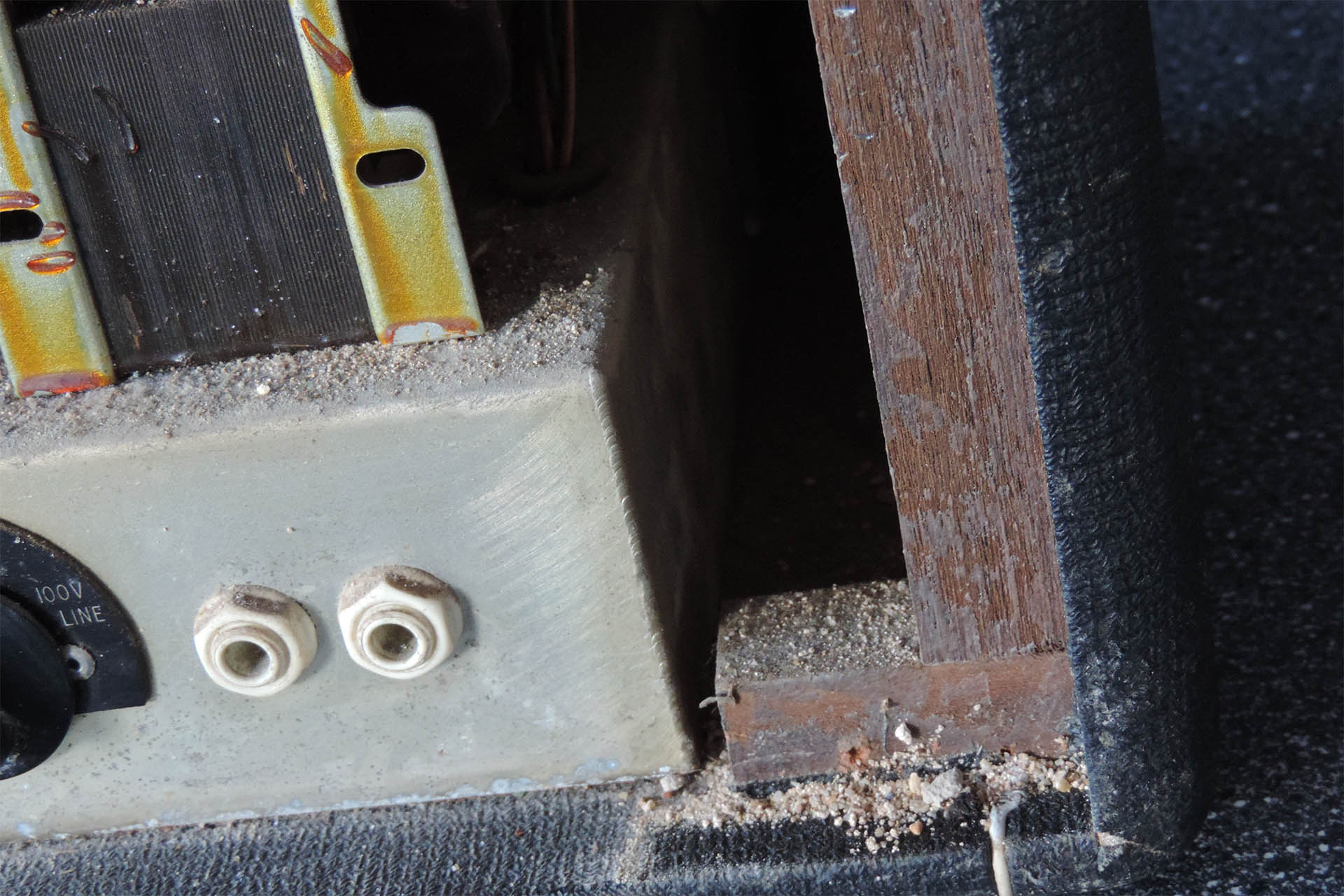
As expected, both of them were full of sand, like SERIOUSLY FULL OF SAND. One had been modified and had holes drilled in the front panel and in the serial number plate on the rear panel. Most unfortunate but there didn’t seem to be too much wrong with either of them, at least not on initial inspection.
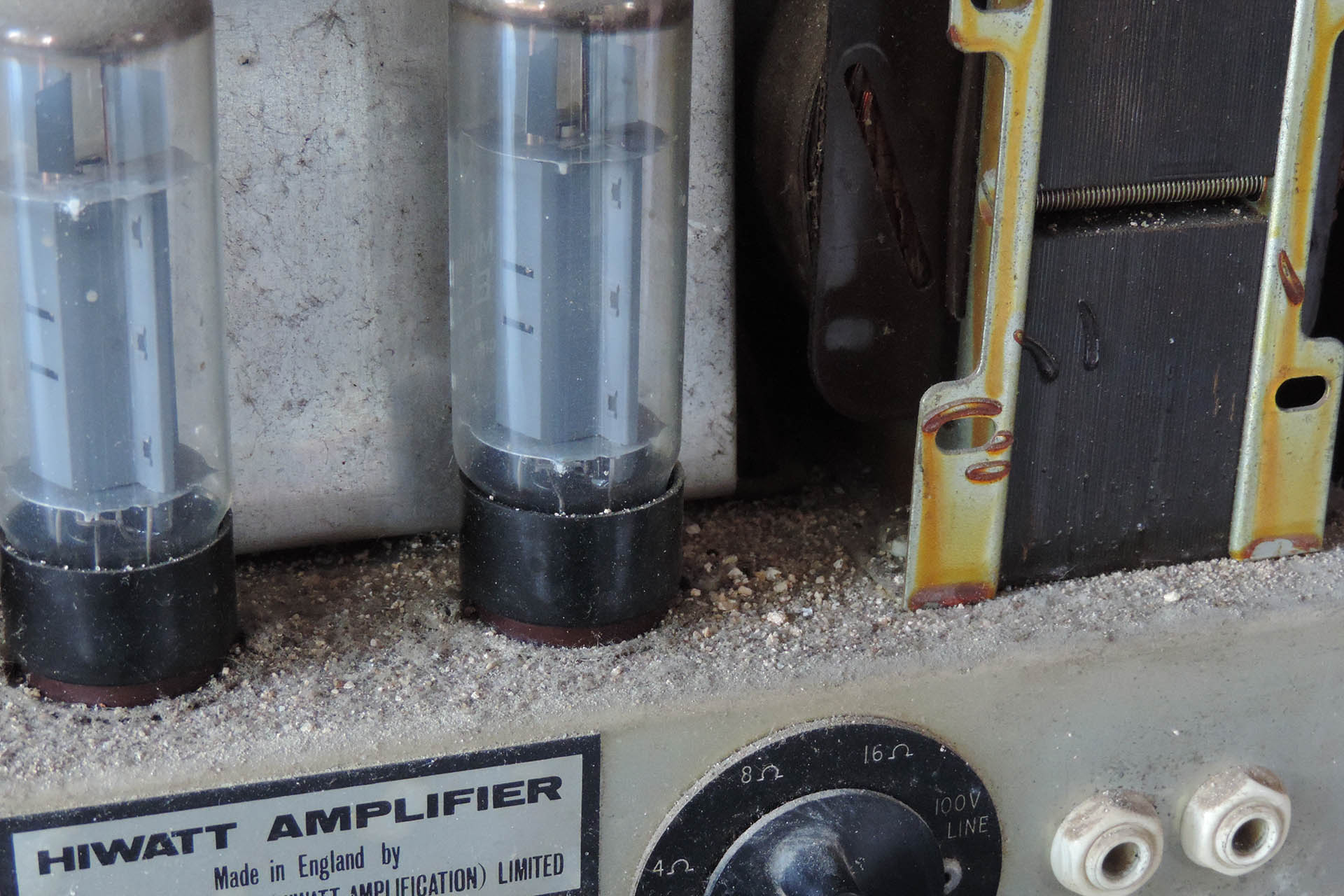
Having been dormant for almost three thousand years, the first thing I did after cleaning them up, was to check the ON / OFF and STANDBY switches. The switches on one of the amps looked particularly bad and although I wanted to keep things as original as possible, I also wanted these amps to actually work... and safely.
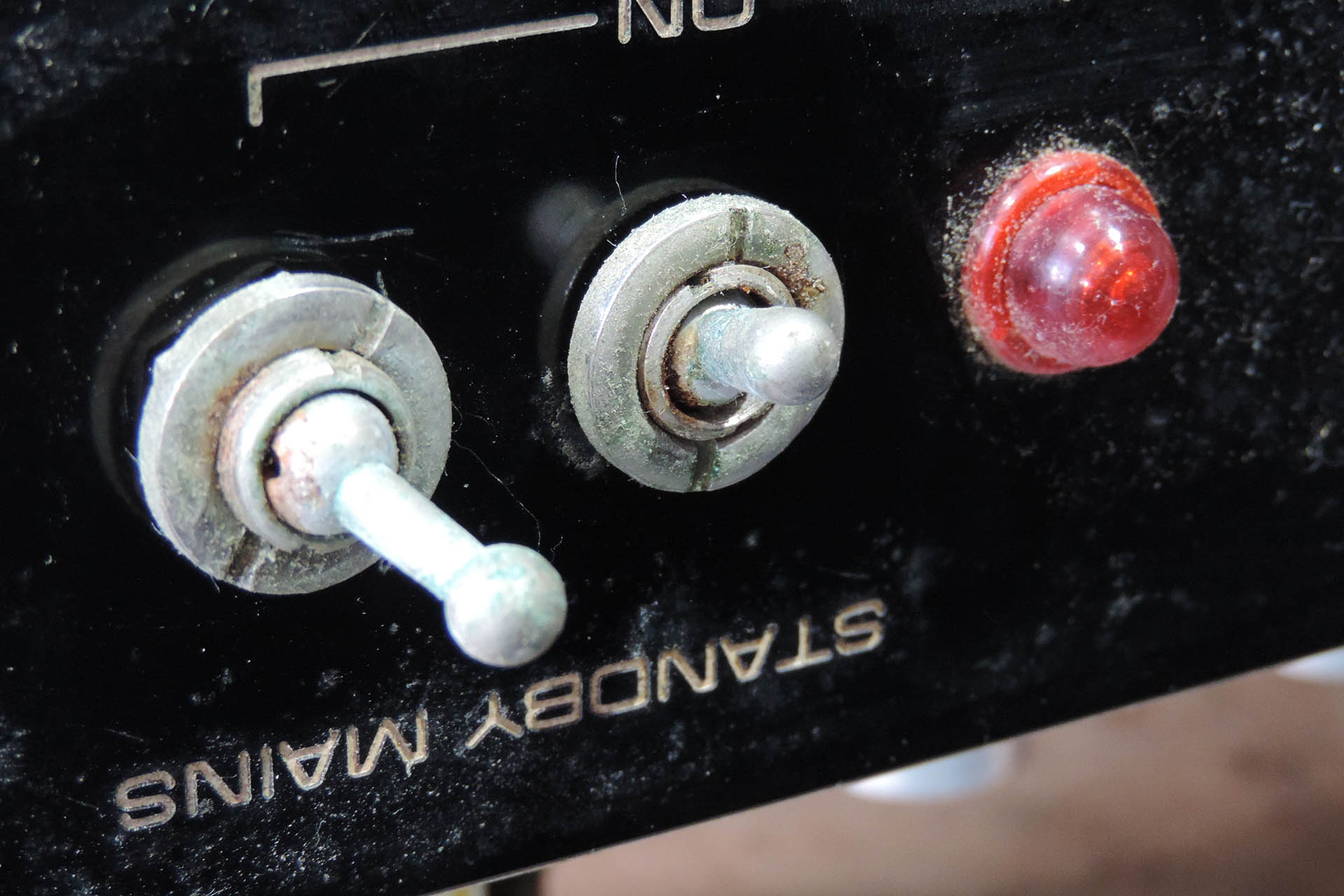
As I proceeded, some hardware just crumbed and I had to replace a lot of screws, all of which were understandably but annoyingly imperial and not metric.

The fuses in both amps were intact suggesting that things were okay last time they were used. My main concern was the output transformers. People underestimate their contribution to the sound of a valve amp and while I'd be able to find modern replacements, they just wouldn't be the same.
A couple of resistors had to be replaced as they either broke or crumbled, too. That led me to check other components, just for integrity. I also ripped out the bad mods on the ‘second’ amp.

Famously, the wiring of Hiwatts is an engineer’s dream and these amps typify the attention to detail with which Hiwatt did things. Everything looks so precise. Everything looks just so tidy. Compared to a Marshall, a Fender or even a Mesa Boogie, these things are just beautiful inside. This kind of precision arrangement surely contributed towards the well-known, superior signal-to-noise ratio associated with those old Hiwatt amps.
Remains of several shark-fin guitars were also found with the amps and in other chambers, prompting expedition artist Tony Burlinson to knock up an impression showing Pharaoh Rokatiti doing his thing in the desert.
Archaeologists didn't find any evidence of a band and speculate that Rokatiti was a solo act. Perhaps he was ahead of his time. Perhaps like the nail, ancient Egyptians didn't conceive the idea of a rock band. Perhaps we'll never know...

Anyway, once the chassis had been cleaned and I had checked the amps were safe, I moved on to the cabinets and spent several days getting the boxes to look like they might have, a couple of thousand years ago.

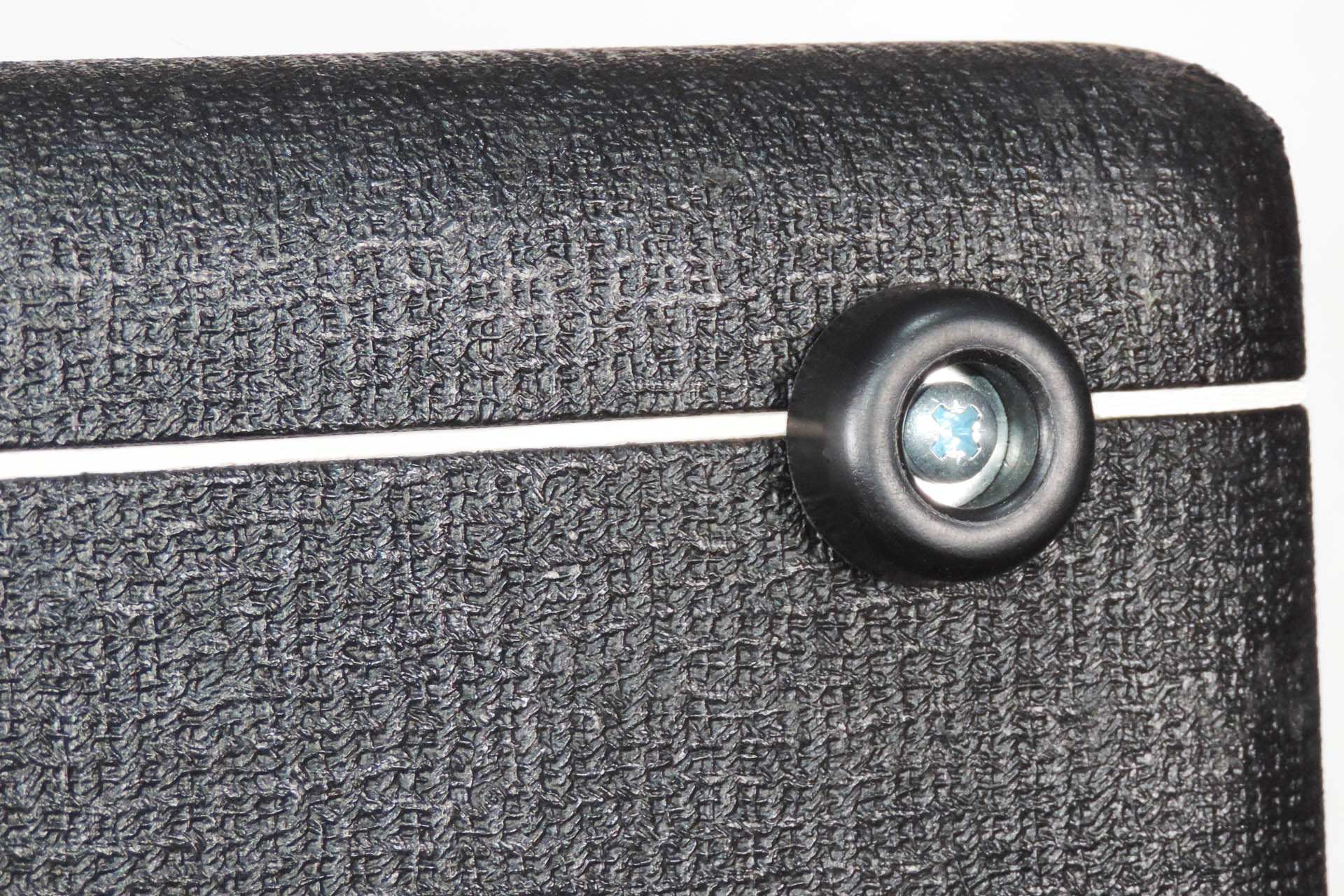
While I was doing that, I ordered valves and capacitors from my good friend, Derek Rocco at Watford Valves. Derek has been supplying me with valves and caps for decades and I've had the privilege of seeing his digital test / calibration equipment in action. My customers expect the best, so I simply won't source these vital components from anywhere else.

Co-designed by Marshall and the Shugaung factory in China, the EL34B is an evolution of the famous ‘Winged C’ EL34 which, by 2007, Svetlana was having problems supplying.
Today the Shugaung EL34B is used by all the big valve amp manufacturers including Hiwatt. Here's what Derek Rocco says: "What I have found with the EL34B, is that in clean mode the valve remains cleaner at higher volume but when driven, it breaks up easily with plenty of rich harmonics."
Replacing the valves was straight-forward enough but the large power supply capacitors were going to be a bit more challenging. It would have been easy enough to rip out the old caps and drop in the new ones but I wanted to retain that lovely Hiwatt wiring.
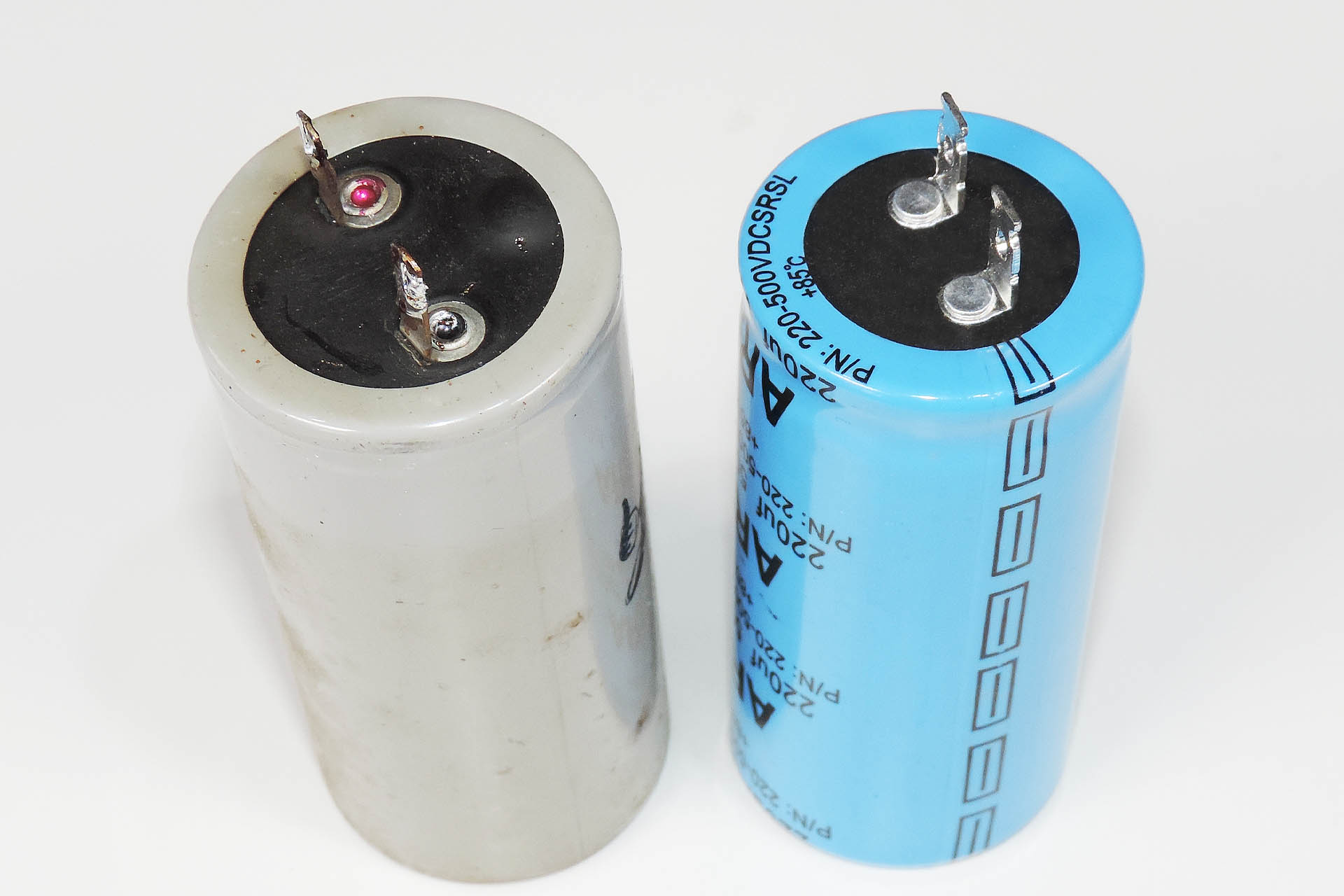
Although roughly the same size, the terminals on the new capacitors were orientated differently and they had a different pitch, to the originals. The difference was enough to make things a bit tricky, even after I'd carefully disconnected the old caps. It took a while and a lot of patience and careful thought to get the arrangement right. In fact I treated the replacement of each of the five capacitors, as a separate operation... and of course after having done one amp, I had to do it all over again.

As mentioned, amp 2 had three mods; one provided a feed off the speaker outputs which was poorly buffered. Another provided a feed off the master volume and the third, which had been partially disconnected, looked like a line input, bypassing the first couple of valve stages. Perhaps Rokatiti wanted to connect his amps somehow. Hmm... If that was the case, I would have expected to see similar mods on the other amp. Anyway, wanting to put these amps as close to factory as possible, I ripped out all the mod stuff.

I'd run out of plastic 11mm hole plugs so I had a couple of frustrating days' wait until my reorder arrived in the post.
One of the holes in the rear panel, had been drilled straight through the serial number plate and although the serial number itself was still quite legible, it just seems such a shame. I did try to contact Hiwatt asking if I could get a replacement serial number plate but disappointingly, I'm still waiting for a response. 🙁

After a couple of days, the job was done and I plugged in the first amp into my custom-built dummy load which has a feed that allows convenient connection to my oscilloscope.
Power on... No big bang, just that gentle hum that we associate with valves amps. Wait a minute for the valves to warm up and then.. Standby, off...

I set my signal generator to chuck out 1kHz at -20dBm and slowly wound up the input gain on the Normal channel. Then I inched up the master volume. Yes, that's right. The DR-103 was a master volume amp and was a little ahead of it's competitors.
The oscilloscope displayed a perfect sinewave. Well that's a good start. I tested the amp at several frequencies allowing me to check the functionality of the tone controls. Wow! Very smooth, no drop-outs or sudden bursts.

Okay, now I need to plug this into a cab and check it out with a guitar. I chose not to use a power soak and was prepared to crank this. Following the flood at my studio last August, I'm still working from home, so this all happened in my kitchen!
Boy, is this thing loud! I was so taken back that I forgot all about the fact that the amp actually worked. I played for about half-an-hour, loving every second and everything remained solid. The second amp was next and performed exactly the same as the first. Amazing. After a couple of thousand years, these things still frigin' rock!!!! 🙂

"Hiwatt Amps Found In Pyramid" Well, not quite but it is April fools' day, LOL. 😀 For those interested, the serial numbers on Adrian's amps indicated that one was made in 1971 and the other in 1972.
Although a challenge, restoring these Custom Hiwatt 100s has been a real pleasure. Showing their age but after a full refurb, they're actually in remarkably good condition and despite a couple of new fittings, are pretty original, too. More importantly, they just sound amazing!

If you're lucky enough to have found a couple of Hiwatt amps in a pyramid, or perhaps at the back of your attic, please do contact me. I'd love to know about them!
These Hiwatt DR-103 amplifiers are a unique link to a bygone age. I’m not talking about a time when thermionic valves ruled, or Pete Townsend of The Who or Dave Gilmour of Pink Floyd, were household names. I’m talking about a time when the likes of Jim Marshall and David Reeves (founder of Hiwatt Amplification), actually cared about their products, the craftsmen who made them and their customers.
I was and always have been a Marshall man but the truth is Marshall, Hiwatt, Fender, it didn’t matter. As a budding rock star, owning one of these amps made you feel like you’d just joined an elite club and that stardom was now somehow, guaranteed. That big black box wasn't just an amp. It was a thing of magic. In fact, back in 1980, when I got my very first Marshall, it sat on my parents’ dining room table for a couple of days, with me err... just staring at it.
I fondly recall the front cover of the Electric Warrior album by T. Rex which pictured a silhouette type image of Mark Bolan playing his famous Les Paul, in front of one of those old stacks. Oh wow! That image was just so inspiring and now I was the owner of a real Marshall amp and there was suddenly a connection between me and Mark Bolan. I felt like someone special and I just knew that all I needed to do now was to record that hit song.
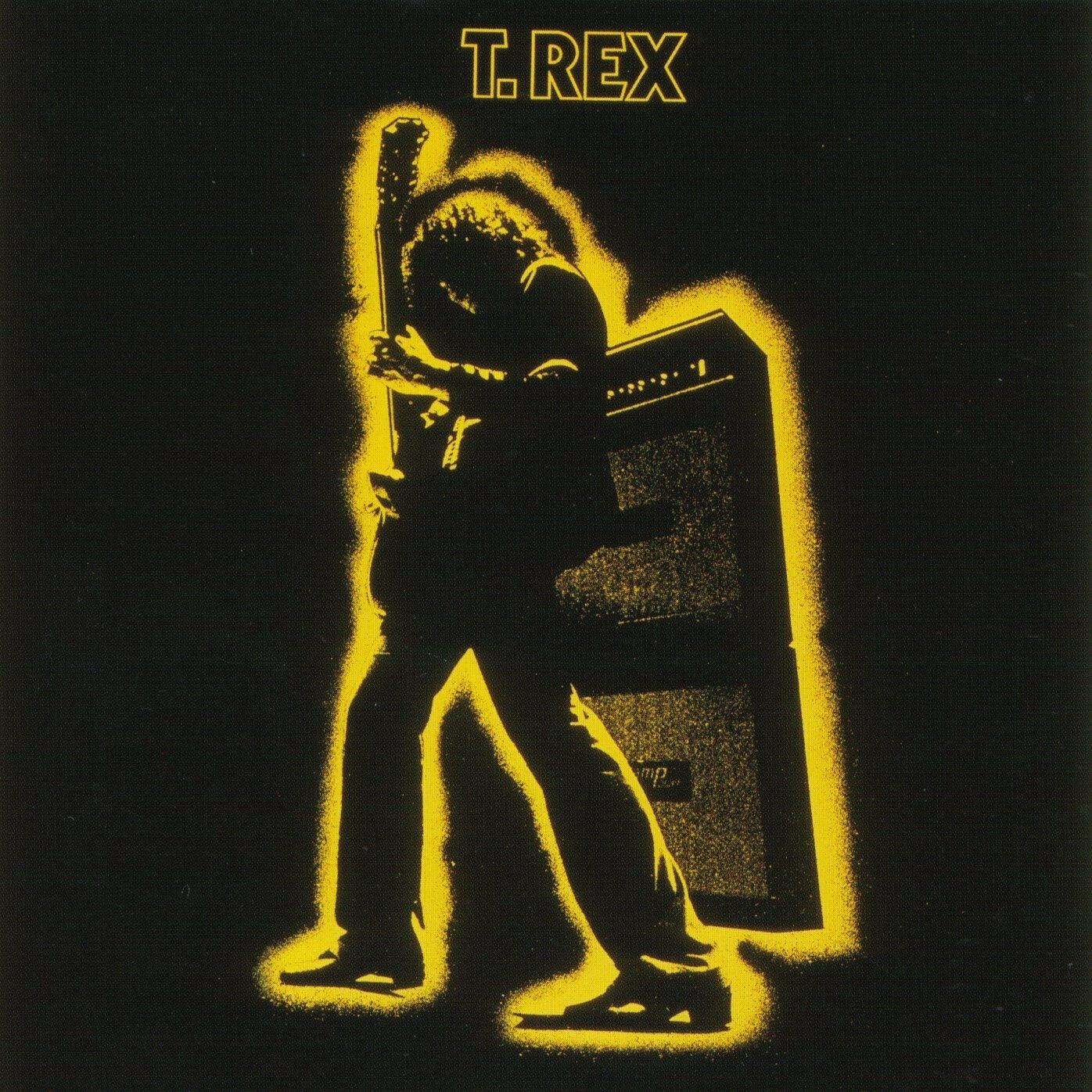
Well, none of that ever happened but I was definitely sold the dream!
Indeed, the dream-maker package disappeared a long time ago. Digital processing, modelling and IR technology means that you can now dial up a patch to sound ‘like’ whatever or even whoever.
Rock was the sound of anarchy and loud, overdriven, low-slung electric guitar, was the symbol of a non-conformist youth. I remember bunking off school to play guitar. Today kids go to school to learn to play rock. Seriously?!?!!?
"Well now-a-days, it's all about the music." I hear people say. Hmm... I remember a time when it was (all) about a whole "lotta" love, I mean more...

